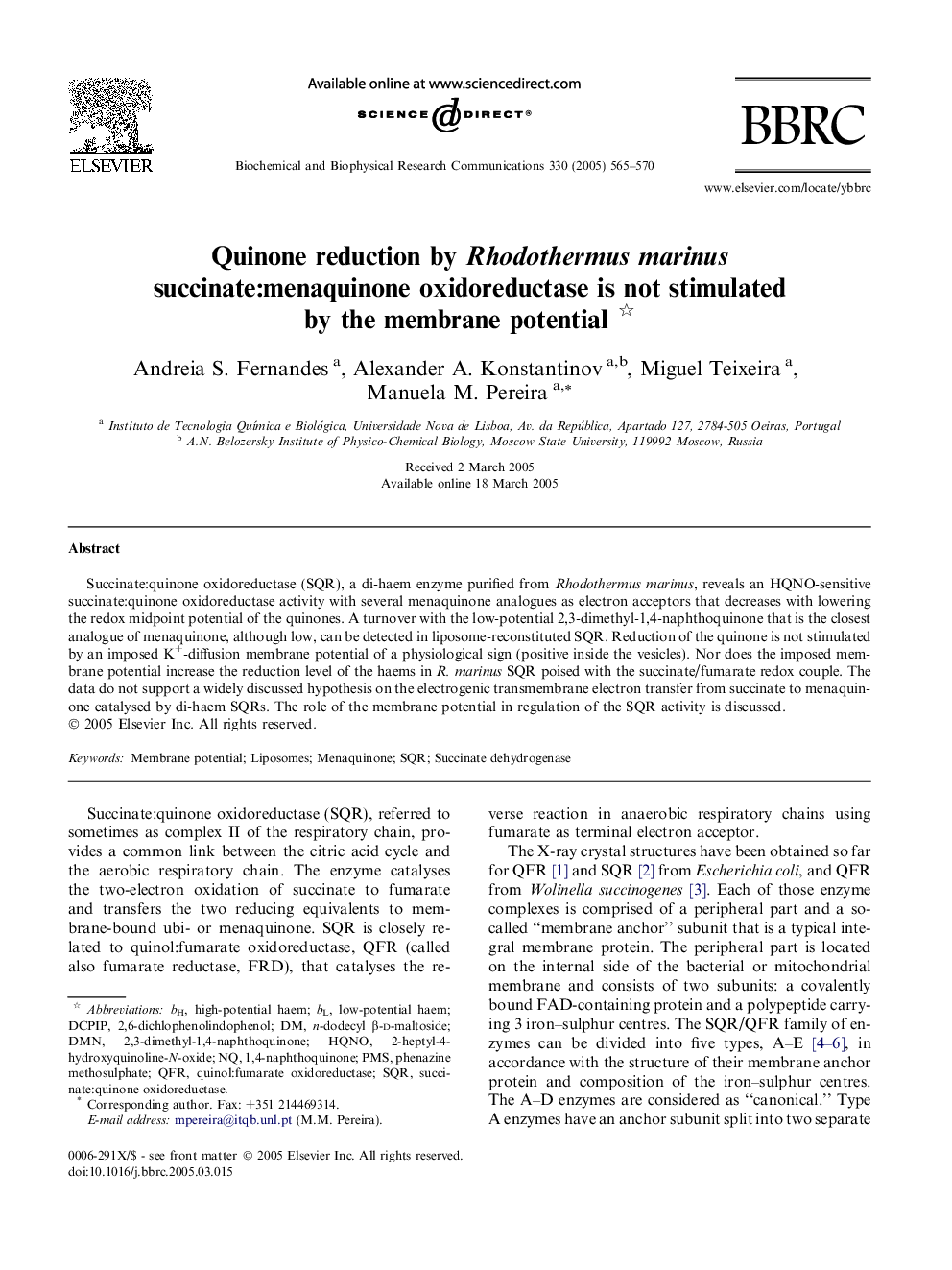| Article ID | Journal | Published Year | Pages | File Type |
|---|---|---|---|---|
| 10770146 | Biochemical and Biophysical Research Communications | 2005 | 6 Pages |
Abstract
Succinate:quinone oxidoreductase (SQR), a di-haem enzyme purified from Rhodothermus marinus, reveals an HQNO-sensitive succinate:quinone oxidoreductase activity with several menaquinone analogues as electron acceptors that decreases with lowering the redox midpoint potential of the quinones. A turnover with the low-potential 2,3-dimethyl-1,4-naphthoquinone that is the closest analogue of menaquinone, although low, can be detected in liposome-reconstituted SQR. Reduction of the quinone is not stimulated by an imposed K+-diffusion membrane potential of a physiological sign (positive inside the vesicles). Nor does the imposed membrane potential increase the reduction level of the haems in R. marinus SQR poised with the succinate/fumarate redox couple. The data do not support a widely discussed hypothesis on the electrogenic transmembrane electron transfer from succinate to menaquinone catalysed by di-haem SQRs. The role of the membrane potential in regulation of the SQR activity is discussed.
Related Topics
Life Sciences
Biochemistry, Genetics and Molecular Biology
Biochemistry
Authors
Andreia S. Fernandes, Alexander A. Konstantinov, Miguel Teixeira, Manuela M. Pereira,
